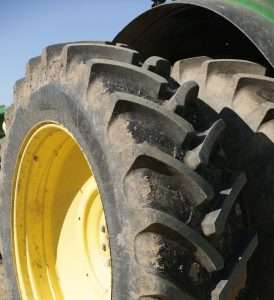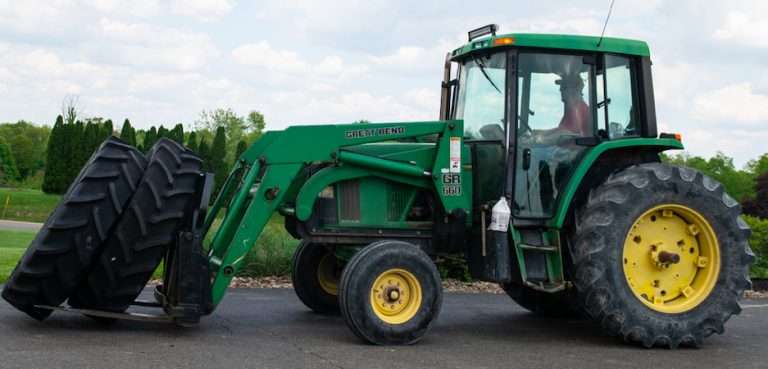ceat-speciality:blogs-tags/all,ceat-speciality:blogs-tags/tire-advice
Want to Optimize Your Farm Tractor Tire Performance? It’s in the Air!
Tue, 22 Mar 2022 | PRODUCTS
What air pressures should I carry in my farm tractor tires? How often should I check my air pressures? While the answers are dependent on many different factors, here’s some general advice:
The air pressures in farm tractor tires are extremely important for getting the optimal wear and performance from the tires, as well as possibly avoiding dreaded downtime.
Inflate to the air pressure that is appropriate for the most demanding application for each tire. This critical information is contained in the tire manufacturer’s data book. The load and inflation tables show the speed range, the inflation range and the load range for each tire.
A tractor tire operating outside of the specified range is a problem waiting to happen – probably sooner rather than later. The farmer may have a tire not suited for his or her application, or the farmer may need to adjust the speed or load to ensure the tire is operating within these boundaries. Damage is inflicted on any tire that operates outside of these limits and will eventually lead to failure.
The heaviest load the tire carries may not be the most demanding application. If that tire operates at higher speeds such as during the roading of one’s equipment, the highest speeds are likely the most demanding aspect, and air pressures will need to be set to account for the increased speed.
Speed Kills
Speed generates heat, which is the No. 1 enemy of rubber and your tires. Rubber shrinks when subjected to excess heat and causes separations due to the internal tire construction. These separations lead to failures. They can be dangerous as well as inconvenient and expensive because they never happen in the shed. Air pressures should be taken when the tires have not been running and are considered to be at a “cold” temperature. Checking tires first thing in the morning is best since they have been sitting overnight.
Check When Cold
Air pressures taken after the tire has been running will be higher than the “cold” air pressures and can be misleading. If you reduce your pressure after taking a warm inflation pressure, you likely will end up in an under-inflation situation. Under inflation of any tire can result in sidewall deflection that extends beyond the deflection parameters of the sidewall, resulting in tire damage.
Overinflation can also be damaging. Maximum “cold” inflation pressures should be adhered to very diligently. The air chamber determines the load each tire can carry. The larger the air chamber, the larger the load it can carry. When you have too small of an air chamber to carry the required load, it is sometimes tempting to over-inflate the tire. Increased air pressures can carry more load but exceeding the manufacturers’ maximum inflation pressure is not endorsed by any manufacturer.
There are some situations where a manufacturer may utilize extended load and inflation tables for certain tires in certain applications in their portfolio. These extended tables are not usually printed in their data books. If you have this information from the manufacturer, it is fine to follow their directions.
Overinflation is a Problem Too
Overinflation with over loads can help reduce the sidewall deflection, but the structural integrity of the tire, as well as the service condition likely, have been compromised. Running tires in an overloaded and over-inflated condition is really asking for a catastrophic failure. Manufacturers know the parameters of their tires and will determine if their tires will function properly in these conditions.
All manufacturers have buffer zones for inflation pressures as well as speed ratings. What is comfortable and reasonable for a manufacturer to recommend is up to them, and as tire dealer, you should follow the manufacturer’s specifications.
Farm tractor tires are expensive, down time is critical and tires do not repair themselves!
Inflation pressure for agricultural tires is very simple. Farmers just need to inflate to the most demanding application. The hard part is determining exactly the most demanding application. Inflating tires to their maximum recommended air pressures is one approach, but it’s not the best way to deliver the maximum performance and benefits from your tires.












































